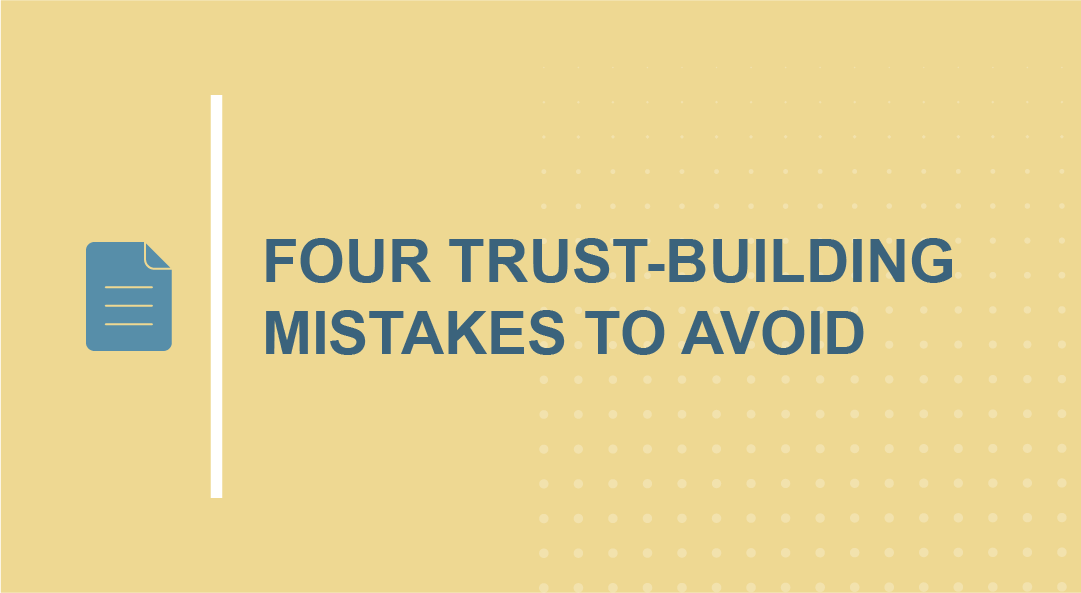Hopefully, our series of posts on creating cultures of trust has been helpful for you. Over the past couple of months, we’ve focused on some powerful trust building tactics. While I prefer sticking to the positive, it is important to acknowledge the “misses” as well as the wins.
That’s why I’m sharing a few stumbling blocks to avoid:
Not maximizing your onboarding system. By reassuring new employees that you’re here to help them through the “fear and doubt” phase, and by connecting them to coworkers early on, you can start building the bonds of trust right away. (We call this emotional onboarding…please let me know if you’d like to learn more about it.)
Vagueness around skill building and development. People trust you when you make it clear you have their best interests at heart. Let them know from the beginning you want them to have a future with you. Even better when development is personalized for their goals, learning styles and natural talents.
Underestimating psychological safety. People need to feel safe to share what they’re thinking, where they may be struggling, and what they need from us. Regularly ask, “What’s worrying you right now?” (and really listen to their answers). It’s crucial to have great well-being resources, but it’s even better to narrate that we want and expect people to speak up if they need help.
Missing opportunities to show that you trust them. When trying to solve a tough problem, ask employees what they think you should do. This helps them feel trusted. It’s also why autonomy matters so much. When we ask people what they feel will make their job better—and follow through—we show them that we trust them. This is a huge factor in improving engagement and job satisfaction.
Most leaders have good intentions. The best ones want to learn how to get better and better.
The Human Margin: Building the Foundations of Trust, which I co-authored with Katherine A. Meese, Ph.D, offers more insight on what does (and does not) build trust. I hope you will give it a read.







